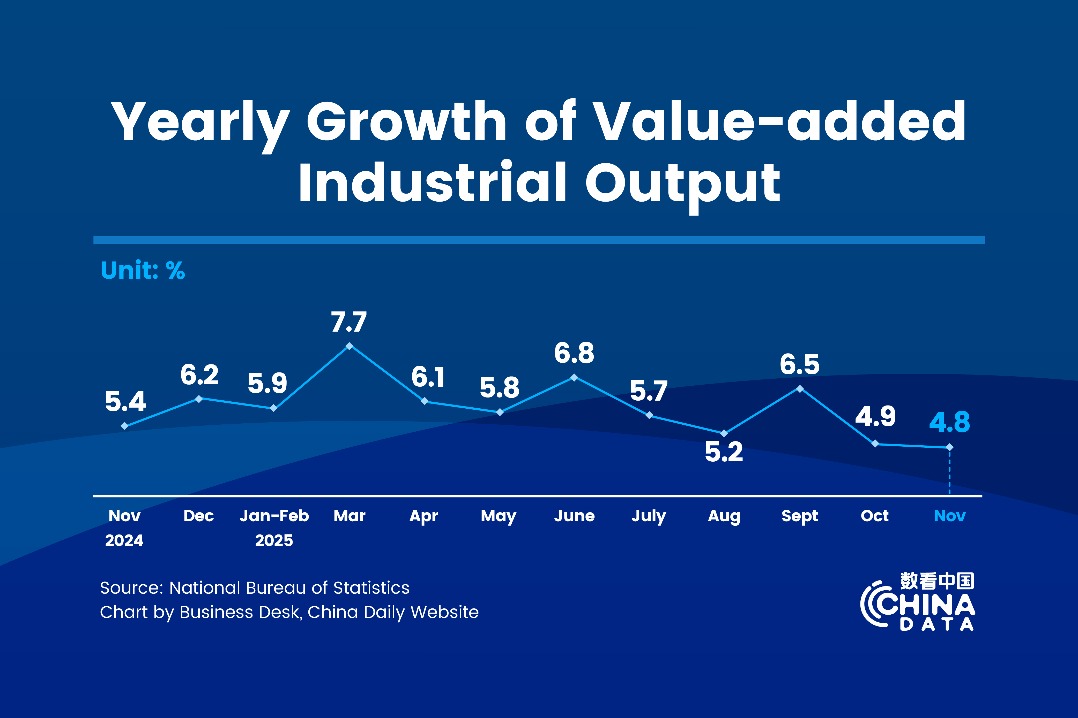Macro policies can mend structural imbalances


China will say goodbye to the fossil fuel-based industrial development track since the first Industrial Revolution that began in Britain and switch to the green growth-based development track that is unprecedented.
Compared with Europe, China faces greater challenges with its goal to achieve carbon neutrality. Its annual GDP per capita exceeded $10,000 for two consecutive years, but the figures were just slightly above $10,000.
Besides, the country has decided to reduce carbon emissions despite the fact that energy consumption is a necessary condition for achieving growth, not to mention that there are only 40 years left for China to realize its goal.
This is a huge structural and industrial change that will reshape the manufacturing sector and lead to changes in economic and human activities.
The third change is digital transformation. China-US trade frictions intensified amid the COVID-19 outbreak and gradually evolved into technological and global competition. China is left with no other choice but to take the path of endogenous technological innovation development.
Digitization progressed rapidly in many sectors, including manufacturing, commerce and communications. The process of digitization will fundamentally change a nation's core competencies and resource endowments, which were defined by Adam Smith, an 18th-century Scottish economist and philosopher.
As data become resources, and science and technology capacity and algorithms become labor productivity, a fundamental change will take place in a country's competitive positioning.
China is a major power that generates a vast amount of data, as the number of its netizens reached 989 million by the end of 2020, according to the National Bureau of Statistics.
Currently, the average monthly internet traffic per capita in China is 9 gigabytes, 50 percent higher than that of OECD countries. We estimate that the number will increase to about 100 gigabytes in 2030.Our country is also pushing harder for the development of the internet of things. Both people and things are generating countless data, which become resources and will become assets.
Taking the above three changes into consideration, we will find that China's macroeconomic policies are particularly important at this point.
First of all, the macro policies will continue to lead the country out of the COVID-19 crisis and promote sustainable growth on a new basis. At this stage, what is important is the structure and quality of the economy, rather than economic aggregate.
This year, we need to mend structural imbalances caused by the pandemic, such as the imbalance among different sectors, regional imbalance, and the imbalance between the real economy and the virtual economy. We must return to our own framework of economic structure and development, to prevent the crisis from becoming a turning point in structural changes and making a long-lasting scar.
In this sense, China's policymakers showed great wisdom by setting a GDP growth target of over 6 percent for this year. It means they have realized the importance of economic structure and quality and have taken a crucial step forward.
Under the circumstances, China's monetary policy should remain relatively loose to maintain adequate liquidity. It is particularly important for China to adopt well-targeted fiscal policy measures to deliver solid outcomes, so that the country will fix structural imbalance caused by the pandemic and also readjust its structure to lead economic development in the future.
This year is an important year in China's history because it is the beginning of the 14th Five-Year Plan (2021-25). The tone of macroeconomic policies will lay the ground for the country to head for a new development pattern of green and sustainable growth, which is a challenge to, and a target of, the policies this year.
The writer is chairman of the National Institute of Financial Research at Tsinghua University in Beijing and former deputy managing director of the International Monetary Fund. The views are compiled from his speech at the Tsinghua PBCSF Chief Economists Forum 2021.
The views don't necessarily reflect those of China Daily.




































